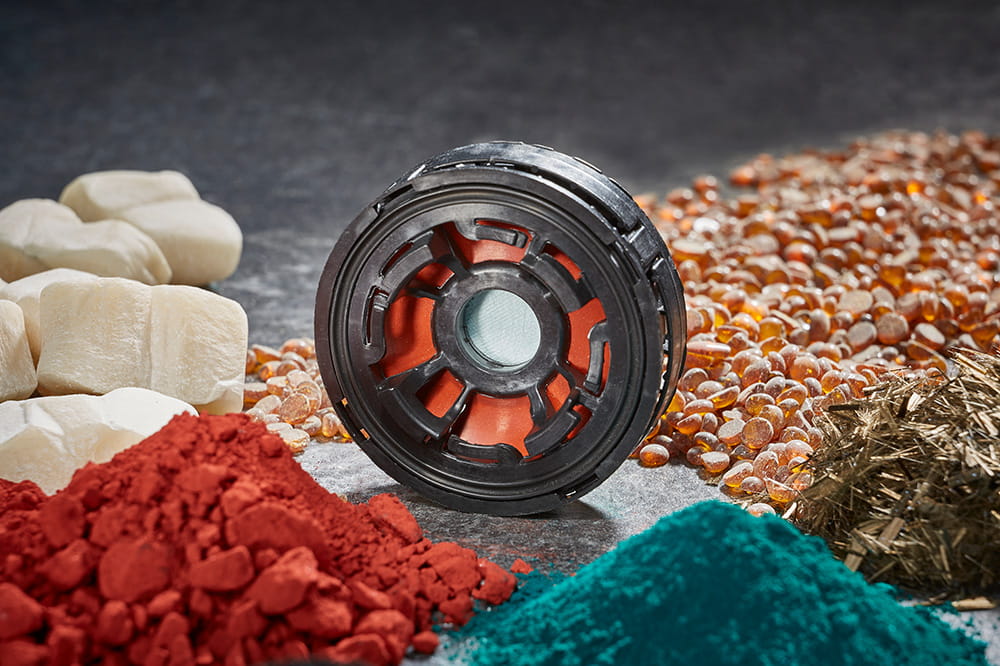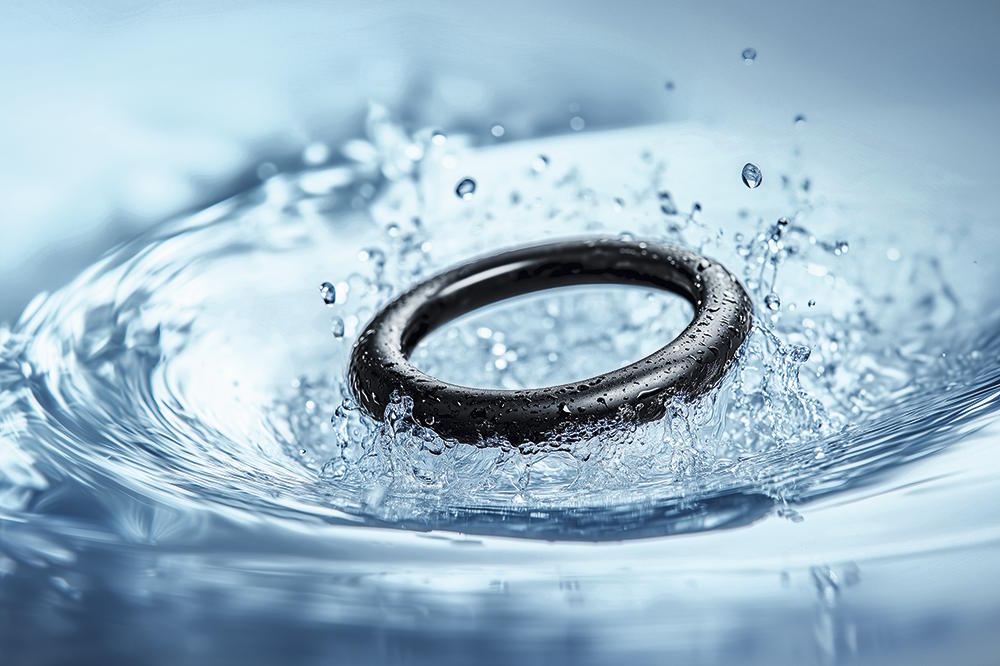Obtain news and background information about sealing technology, get in touch with innovative products – subscribe to the free e-mail newsletter.
17.01.2024 | Press release
A Very Hot Item: Thermoplastics For Up To 1,200 Degrees Celsius
Weinheim (Germany), January 17, 2024. By offering a new class of materials, Freudenberg Sealing Technologies is playing a significant role in improving fire protection in electric vehicle drives. Its name is “Quantix ULTRA” and it resists melting even at extreme temperatures of up to 1,200 degrees Celsius. Processing the material in injection molding is both versatile and economical. Given that today’s vehicles call for lightweight construction, its lower density compared to metallic materials is an additional advantage. The first series application is now underway, as a flame protection barrier for cooling system parts in an electric car’s lithium-ion battery.
Electric cars with lithium-ion batteries have a range that is suitable for everyday use and require a high degree of safety. Various safety measures are being implemented to make sure that any thermal runaway of the battery is prevented or delayed. So far, plastic components used for this purpose have generally failed to meet the automotive industry’s strict test standards for electric drives. This is different with Quantix ULTRA from Freudenberg Sealing Technologies: The new material class can withstand very high temperatures. It does not melt or ignite. In laboratory tests, a two-millimeter-thick material sample can even resist an applied flame with a temperature of 1,200 degrees Celsius for over 25 minutes.
Further tests simulate the emission of hot particles under high pressure, which can occur if the gases in battery cells are abruptly discharged. Quantix ULTRA withstands the stress test for 20 seconds. A two-millimeter-thick aluminum sample only takes two or three seconds to be destroyed.
Freudenberg Sealing Technologies uses this innovative material to produce flame protection barriers for the cooling system of lithium-ion batteries, for example. As of February 2024, these will be used for the first time by a car manufacturer in series production vehicles.
Quantix ULTRA is suitable for all applications with high requirements for fire protection and lightweight construction. Moreover, it is not limited to specific geometric shapes. The material can be processed into films, for example, to be implemented in battery-electric drives. Other areas of use include enclosures for power supply units, media-carrying lines, cable insulation, battery housing covers and components for electric motors.
Flame protection at the highest temperatures
For engineering plastics, temperature resistance is an outstanding differentiating feature. This applies to both amorphous and semi-crystalline materials. But all currently used polymers have one thing in common: Once the so-called glass transition temperature is reached, their rigidity decreases noticeably and collapses abruptly when the melting point is exceeded. In such a case, the flame protection ceases to exist.
Quantix ULTRA is different: “The new material doesn’t melt at high temperatures; instead, it exhibits elastic behavior that can be compared to elastomers,” explains Kira Truxius, Material Expert Thermoplastics at Freudenberg Sealing Technologies. “It also has a glass transition temperature that is 53 Kelvin higher, which means that it retains its rigidity and flame protection over a significantly longer period of time. When you add up its qualities, Quantix ULTRA is at the very top of all currently known plastics.
Patented know-how for focused material properties
The base material of Quantix ULTRA is a thermoplastic that is already temperature resistant. The precise addition of fillers such as glass or carbon fibers reinforces the mechanical stability even under enormous heat. The additional cross-linking of the plastic molecular chains ensures that the component maintains its shape even under extreme conditions. The material properties can be adjusted with a focus on the specific application. “Our patented know-how consists of the precise addition of suitable materials that create bridges between the molecular chains. The patents are the result of successful teamwork,” explains Dr. Björn Hellbach, Material Expert Thermoplastics at Freudenberg Sealing Technologies.
Economical production in large quantities
Quantix ULTRA is easy to process through injection molding. It shares the associated advantages with other thermoplastics, including the production of complex geometries in short cycle times and thus in large quantities. The patented cross-linking also plays a role in the economical production. It is solely based on the introduction of a special cross-linking agent into the material while maintaining the standard injection molding process. Other known methods are much more complicated. They work with gamma radiation or in solvents.
Ulrike Reich
Head of Media Relations & Internal Communications
Telephone: + 49 (0) 6201 960 5713
ulrike.reich@fst.com chevron_rightNews Service
You can subscribe to the Freudenberg Sealing Technologies news alert service, bringing you the news as soon as they are published. You can always unsubscribe from this service.
Subscribe now! chevron_rightMore news on the subject Material Expertise

News Service
You can subscribe to the Freudenberg Sealing Technologies news alert service, bringing you the news as soon as they are published. You can always unsubscribe from this service.
Subscribe now!










